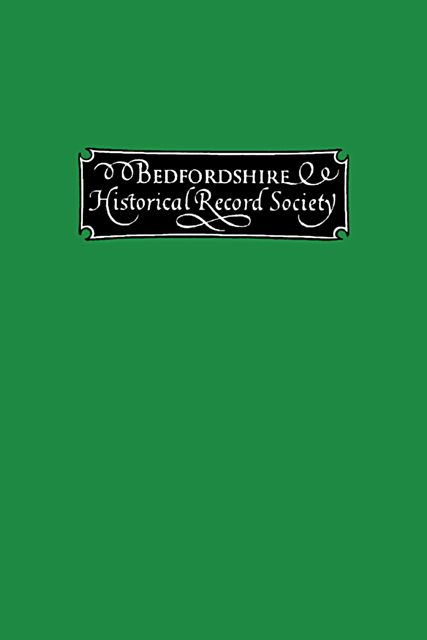Book contents
- Frontmatter
- Contents
- Rules For Transcription
- The Beauchamps, Barons of Bedford, by C. Gore Chambers
- Clerical Subsidies in the Archdeaconry of Bedford, 1390-2 and 1400-II
- Domesday Notes
- A Lease of Caddington Manor in 1299
- Sir William Harper, Knight
- Early Charters of the Priory of Chicksand
- Notes on Two Trades
- The Bedford Eyre, 1202
- Records of Northill College. No. I
- Index
Clerical Subsidies in the Archdeaconry of Bedford, 1390-2 and 1400-II
Published online by Cambridge University Press: 14 July 2023
- Frontmatter
- Contents
- Rules For Transcription
- The Beauchamps, Barons of Bedford, by C. Gore Chambers
- Clerical Subsidies in the Archdeaconry of Bedford, 1390-2 and 1400-II
- Domesday Notes
- A Lease of Caddington Manor in 1299
- Sir William Harper, Knight
- Early Charters of the Priory of Chicksand
- Notes on Two Trades
- The Bedford Eyre, 1202
- Records of Northill College. No. I
- Index
Summary
INTRODUCTION
The foundation of the English Parliament, with which rests the imposition of taxes, was laid by Edward I. The Church was strong enough to secure exemption for the clergy from the taxes voted by the Lay Parliament; and to exercise the right of self-taxation in. her own assemblies or convocations.
As the 14th century advanced, it became the recognized custom for the Convocations representing the clergy to assemble at the same time as the representatives of the laity. The Parliament granted subsidies to the King to be collected from the laity of the kingdom; the convocations fixed the amount to be paid by the clergy. The clerical subsidies were collected under the authority of the Archbishops of Canterbury and York.
The number of clergy at the end of the 14th century was larger than we are accustomed to think. The secular clergy (living in the world, i.e., in saeculo) included—(I) those in charge of parishes, as rectors or vicars; (2) those who were called “ capellani “ (chaplains). These were generally priests whose office it was to say Mass at Chantry altars or chapels; (3) a considerable number of persons designated “ clerici,” some of whom were perhaps, in minor orders—sub-deacons or readers—some being what we understand by the name of clerk, and others who had secured the privilege of clergy by attachment of some kind to the churches.
The regular clergy were those who belonged to monastic establishments, and were included under the general name of “religiosi.” These Religious Houses varied very much in wealth and importance, as well as in the class of persons, men and women, who were attracted to them.
The rolls preserved in the Public Record Office, under the title of “ Clerical Subsidies,” are mostly the commissions of the Archbishop of Canterbury to the persons whom he appoints to collect the subsidies granted by the clergy in convocation. These are generally of little interest. But among those for the Diocese of Lincoln there is a bundle (marked “ Clerical Subsides “ 35/24) of five rolls giving the subsidies levied from parishes in five Deaneries within the Archdeaconry of Bedford.
- Type
- Chapter
- Information
- Publisher: Boydell & BrewerFirst published in: 2023

